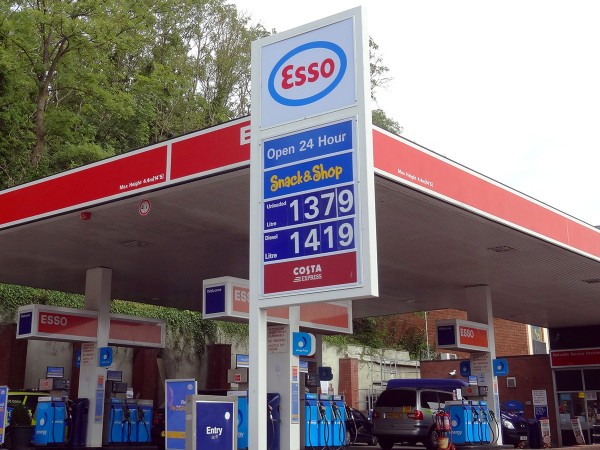 From early January to late February 2013, the average pump price of petrol in the UK rose by over 6p per litre – a rise of 4.7% in just seven weeks. There have also been substantial rises in the price of diesel.
From early January to late February 2013, the average pump price of petrol in the UK rose by over 6p per litre – a rise of 4.7% in just seven weeks. There have also been substantial rises in the price of diesel.
The higher prices reflect a rise in the dollar wholesale price of oil and a depreciation in the pound. From 2 January to 21 February the pound fell from $1.63 to $1.53 – a depreciation of 6.1% (see). Crude oil prices (in dollars) rose by just under 7% over this period. With oil imports priced in dollars, a weaker pound pushes up the price of oil in the UK. The price has then been pushed up even higher by speculation, fuelled by the belief that prices have further to rise.
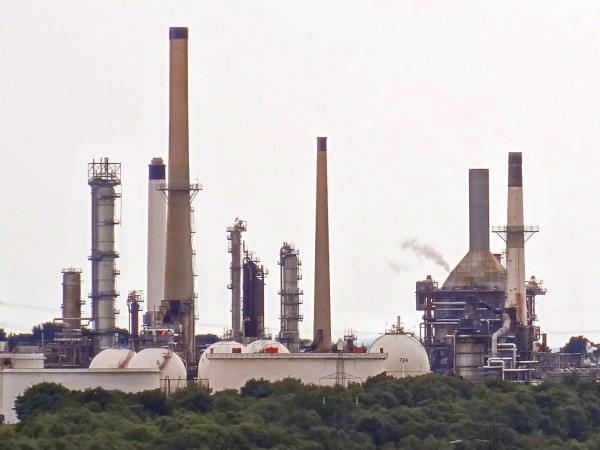 The higher price of road fuel, plus the general squeeze on living standards from the recession, with prices rising faster than wages, has caused a reduction in the consumption of road fuel. Petrol sales have fallen to their lowest level for 23 years. Sales in January 2013 were 99m litres down on the previous month’s sales of 1564m litres (a fall of 6.3%).
The higher price of road fuel, plus the general squeeze on living standards from the recession, with prices rising faster than wages, has caused a reduction in the consumption of road fuel. Petrol sales have fallen to their lowest level for 23 years. Sales in January 2013 were 99m litres down on the previous month’s sales of 1564m litres (a fall of 6.3%).
Not surprisingly motorists’ groups have called for a reduction in fuel taxes to ease the burden on motorists. They also argue that this will help to drive recovery in the economy by leaving people with more money in their pockets.
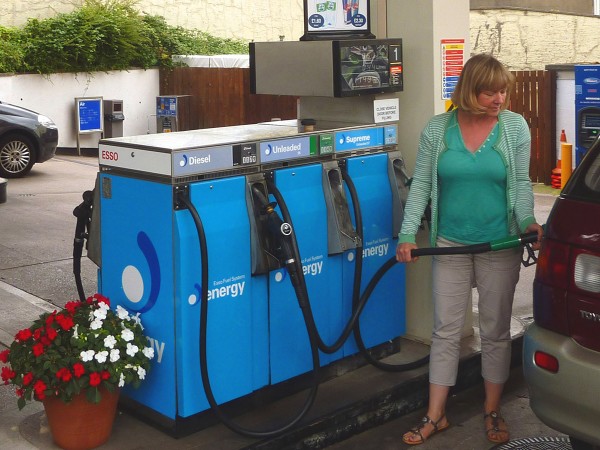
Equally not surprisingly, those concerned about the environment have welcomed the reduction in traffic, as have some motorists who like the quieter roads, allowing journey times to be cut, with resulting reductions in fuel consumption per mile.
The following videos and articles discuss the causes of the most recent fuel price rises and also examine the responsiveness of demand to these higher prices and to the reductions in real incomes.
Webcasts
 Rising petrol prices are ‘forcing drivers off the road’ BBC News, Richard Westcott (22/2/13)
Rising petrol prices are ‘forcing drivers off the road’ BBC News, Richard Westcott (22/2/13)
 Fuel prices ‘forcing drivers off road’ – AA BBC News (22/2/13)
Fuel prices ‘forcing drivers off road’ – AA BBC News (22/2/13)
 Fuel Prices Head For Highest Level Ever Sky News (22/2/13)
Fuel Prices Head For Highest Level Ever Sky News (22/2/13)
 Commodities Next Week: Fuel Prices Hit Fresh 2013 Highs CNBC (22/2/13)
Commodities Next Week: Fuel Prices Hit Fresh 2013 Highs CNBC (22/2/13)
 Ministers to blame for high fuel prices, says competition watchdog The Telegraph, Peter Dominiczak (30/1/13)
Ministers to blame for high fuel prices, says competition watchdog The Telegraph, Peter Dominiczak (30/1/13)
Articles
Petrol price surge adds 6.24p to a litre in a month The Guardian (22/2/13)
Petrol prices set for record highs as speculators and weak pound drive up pump costs again This is Money (22/2/13)
How are motorists saving fuel? NNC Magazine, Tom Geoghegan (9/3/11)
AA Report
Fuel Price Report (February 2013)
Data
Weekly road fuel prices Department of Energy and Climate Change
Energy consumption in the UK Department of Energy and Climate Change
Oil and oil products: section 3, Energy Trends Department of Energy and Climate Change
Europe Brent Spot Price FOB (Dollars per Barrel) US Energy Information Administration
Crude Oil (petroleum), Price index Monthly Price – Index Number Index Mundi
Questions
- Is it possible to calculate the price elasticity of demand for petrol from the data given? Try making the calculation.
- How important is the ceteris paribus (other things being equal) assumption when calculating the price elasticity of demand for petrol?
- Why is the long-run price elasticity of demand for road fuel likely to different from the short-run price elasticity?
- If wholesale oil prices go up by x%, will prices at the pumps go up by approximately x% or by more or less then x%? Similarly, if the pound depreciates by y% would you expect prices at the pumps go up by approximately y% or by more or less then y%? Explain.
- How has speculation affected fuel prices? Is this effect likely to persist? Explain.
- Under what circumstances would a reduction in road fuel taxes help to drive the recovery? Are such circumstances likely?
- Which groups in society suffer most from higher fuel prices? Is this reflected in their price elasticity of demand and if so why?
- Is a rise in fuel prices above inflation likely to increase or decrease inequality in living standards? Explain.
- Should externalities from fuel consumption and production be taken into account when setting the duty on petrol and diesel and, if so, what would be the implication for prices?
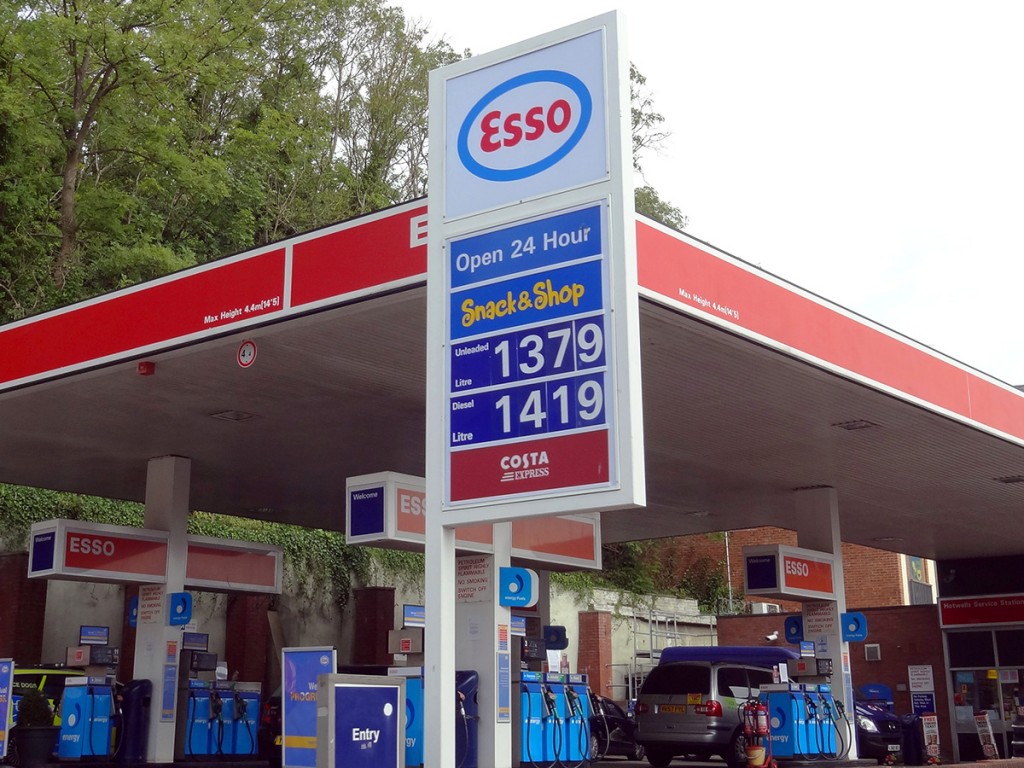 As resources become scarce, the price mechanism works to push up the price (see, for example, Box 9.11 in Economics 8th ed). If you look at the price of petrol over the past few decades, there has been a general upward trend – part of this is due to growth in demand, but part is due to oil being a scarce resource. Many millions have been spent on trying to find alternative fuels and perhaps things are now looking up!
As resources become scarce, the price mechanism works to push up the price (see, for example, Box 9.11 in Economics 8th ed). If you look at the price of petrol over the past few decades, there has been a general upward trend – part of this is due to growth in demand, but part is due to oil being a scarce resource. Many millions have been spent on trying to find alternative fuels and perhaps things are now looking up!
Air Fuel Synthesis, a small British company, has allegedly managed to make ‘petrol from air’. Following this, the company has unsurprisingly received finance and investment offers from across the world. However, the entrepreneur Professor Marmont has said that he does not want any company from the oil industry to get a stake in this firm. This doesn’t mean that investment is not needed or on the cards, as in order to increase production of petrol from thin air financing is needed. Professors Marmont said:
We’ve had calls offering us money from all over the world. We’ve never had that before. We’ve made the first petrol with our demonstration plant but the next stage is to build a bigger plant capable of producing 1 tonne of petrol a day, which means we need between £5m and £6m
Whilst the process appears to be a reality, Air Fuel Synthesis is a long way from being able to produce en masse. However, it does offer an exciting prospect for the future of petrol and renewable energy resources in the UK. At the moment oil companies appear to be uninterested, but if this breakthrough receives the financing it needs and progress continues to be made, it will be interesting to see how the big oil companies respond. The following articles consider this break-through.
Company that made ‘petrol from air’ breakthrough would refuse investment from big oil Independent, Steve Connor (19/10/12)
British engineers create petrol from air and water Reuters, Alice Baghdijan (19/10/12)
Petrol from air: will it make a difference? BBC News, Jason Palmer (19/10/12)
British engineers produce amazing ‘petrol from air’ technology The Telegraph , Andrew Hough (18/10/12)
Questions
- Explain the way in which the price mechanism works as resources become scarce. Use a diagram to help your explanation.
- As raw materials become scarce, prices of the goods that use them to work or require them to be produced will be affected. Explain this interdependence between markets.
- Why is investment from an oil company such a concern for Professor Marmont?
- Why is there unlikely to be any impact in the short run from this new breakthrough?
- If such a technology could be put into practice, what effect might this have on the price of petrol?
- How might oil companies react to the growth in this technology?
 The energy sector has a history of criticism with regards to prices and practices. In the past, Ofgem have tried to make the sector more competitive, by ensuring that price comparisons are easier. At the beginning of this year, many of the big six providers announced price cuts, but within the next few weeks, we will see the reverse occurring, as energy prices begin to rise.
The energy sector has a history of criticism with regards to prices and practices. In the past, Ofgem have tried to make the sector more competitive, by ensuring that price comparisons are easier. At the beginning of this year, many of the big six providers announced price cuts, but within the next few weeks, we will see the reverse occurring, as energy prices begin to rise.
British Gas has announced price rises of 6% from 16th November that will affect over 8 million customers by adding approximately £80 per year to the annual dual fuel bill. Npower will also put its prices up 10 days later (8.8% for gas and 9.1% for electricity), creating higher bills for 3 million people.
In January of this year, when we saw energy prices fall, it was not solely due to Ofgem’s findings. We had a relatively mild winter, which reduced the demand for energy and this fed into lower prices. As the winter now approaches once more, demand for energy will begin to increase, feeding into prices that are now higher.
Furthermore, the energy companies have said that a range of external factors are also adding to their costs and putting increasing pressure on them to increase their charges. Npower’s Chief Commercial Officer said:
“There is never a good time to increase energy bills, particularly when so many people are working hard to make ends meet…But the costs of new statutory schemes, increases in distribution charges and the price of gas for the coming winter are all being driven up by external factors, for example government policy”
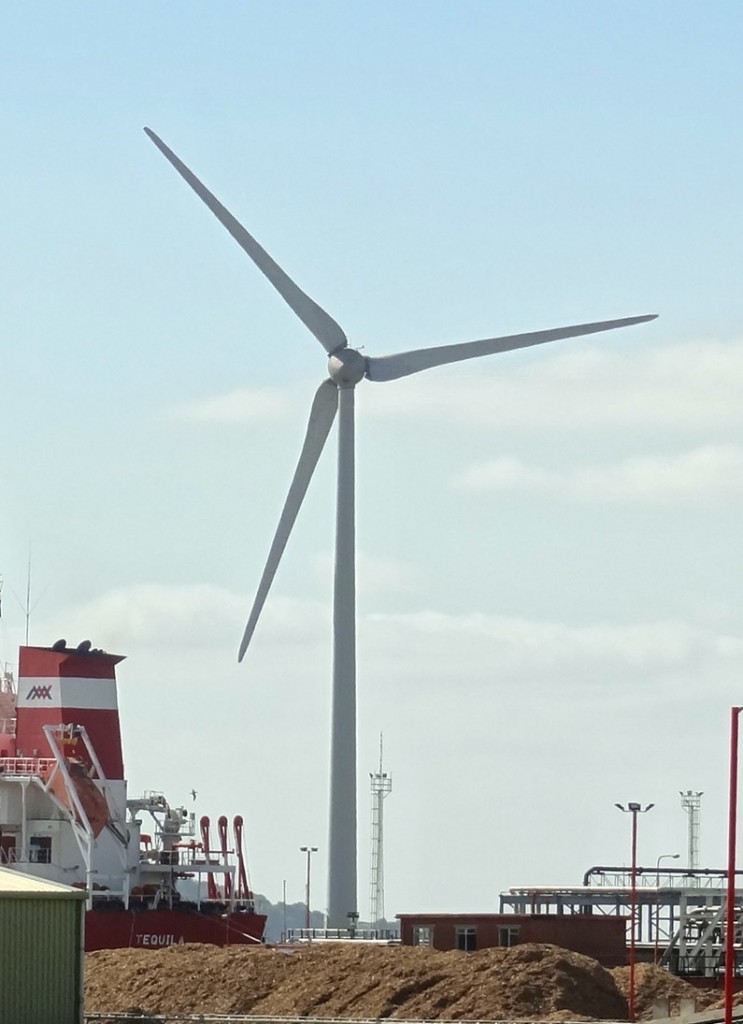 Significant investment is needed in the energy sector. Energy companies are required to set aside money for maintaining and improving the national grid and investing in renewable energy, such as wind and solar power. In order for the energy companies to fund these investments, more money must be raised and the logical method is to put up prices. However, critics are simply blaming ‘these very big lazy companies’ who are passing ‘above-inflation price rises’ onto already squeezed households.
Significant investment is needed in the energy sector. Energy companies are required to set aside money for maintaining and improving the national grid and investing in renewable energy, such as wind and solar power. In order for the energy companies to fund these investments, more money must be raised and the logical method is to put up prices. However, critics are simply blaming ‘these very big lazy companies’ who are passing ‘above-inflation price rises’ onto already squeezed households.
Part of this is undoubtedly to do with the market structure of this sector. A typical oligopoly creates a market which, under certain circumstances, can be highly competitive, but because of barriers to entry that prevent new firms from entering the market may charge higher prices and be inefficient. Indeed, Ofgem has plans to reduce the power of the main energy providers by forcing them to auction off some of the electricity they generate. The aim of this is to free up the market and make it more competitive.
While only three providers have announced price rises, it is inevitable that the other three will follow. The relative increases will create incentives for consumers to switch providers, but crucial to this is an ability to understand the different tariffs on offer and lack of clarity on this has been a big criticism previously levelled at the energy sector. Indeed, half of UK customers have never switched energy providers. Perhaps this is the time to think about it, firstly as a means of saving money and secondly as a means of putting the energy companies in competition with each other. The following articles consider this market.
Energy price rises: how to switch, save and safeguard your supply The Guardian, Mark King (12/10/12)
 Npower and British Gas raise energy prices (including video) BBC News (12/10/12)
Npower and British Gas raise energy prices (including video) BBC News (12/10/12)
Energy price rises? We’re like turkeys voting for Christmas The Telegraph, Rosie Murray-West (12/10/12)
British Gas and Npower to raise prices fuelling fears of a ‘long, cold winter’ for more households Independent
, Graeme Evans (12/10/12)Wholesale prices rise as energy costs jump Wall Street Journal, Sarah Portlock and Jeffrey Sparshott (12/10/12)
British Gas raises gas and electricity prices by 6pc The Telegraph (12/10/12)
Osborne warns energy firms over price hikes Reuters (12/10/12)
Energy price hikes to take effect from next week Independent, Simon Read(13/10/12)
Questions
- What are the main reasons influencing the recent price rises? In each case, explain whether it is a demand- or supply-side factor.
- Using your answer from question 1, illustrate the effect of it on a demand and supply diagram.
- Which features of an oligopolistic market are relevant to the energy sector. How can we use them to explain these higher prices.
- How has government policy affected the energy sector and energy prices?
- Why are customers reluctant to change energy providers? Does this further the energy company’s ability to raise prices?
- Are there any government policies that could be implemented to reduce the power of the energy companies?
 Virgin’s franchise to run the West Coast Main Line from London to Birmingham, Manchester, Liverpool, Glasgow and Edinburgh was due to expire in December. The Department of Transport thus invited tenders to run a new 13-year franchise, worth around £5 billion, and on 15 August announced that the franchise had been awarded to FirstGroup. It had bid substantially more than Virgin.
Virgin’s franchise to run the West Coast Main Line from London to Birmingham, Manchester, Liverpool, Glasgow and Edinburgh was due to expire in December. The Department of Transport thus invited tenders to run a new 13-year franchise, worth around £5 billion, and on 15 August announced that the franchise had been awarded to FirstGroup. It had bid substantially more than Virgin.
Virgin immediately challenged the decision, arguing that FirstGroup’s figures were flawed. According to the second BBC article below:
It argued that FirstGroup’s revenue projections were wildly optimistic – that passenger growth of 6% a year was unlikely given that Virgin had seen growth of 5% a year from a much lower base. This level of passenger growth would have seen FirstGroup’s revenue from the franchise grow by more than 10% a year, which was simply unrealistic, Virgin argued.
And it is not alone. “Everybody in the industry thought that this bid was not sustainable and that the risks had not been taken into account by the Department for Transport,” says rail industry expert Christian Wolmar.
If revenue targets are not met, the franchisee doesn’t have the money to pay the government the promised fee for the contract, which in FirstGroup’s case was back-loaded towards the end of the 13-year term.
After making its decision, the Transport Secretary at the time, Justine Greening, said that the process of assessing the bid was robust and fair and conducted with due diligence. Sir Richard Branson of Virgin strongly and publicly disagreed and Virgin decided to take the Department of Transport to court. The court case was scheduled to begin on 4 October.
 However, in preparing its case to put to the court, the Department of Transport uncovered significant errors in the evaluation of the bids. These errors involved the overestimation of passenger numbers, the undervaluation of risk and a failure to take inflation into account. The errors stemmed from inputting the data incorrectly.
However, in preparing its case to put to the court, the Department of Transport uncovered significant errors in the evaluation of the bids. These errors involved the overestimation of passenger numbers, the undervaluation of risk and a failure to take inflation into account. The errors stemmed from inputting the data incorrectly.
The errors were so serious that the new Transport Secretary, Patrick McLoughlin, on the day before the court case was due to begin, announced that he was scrapping the contract to FirstGroup and would invite new bids. All four of the original bidders would have their costs refunded, amounting to some £40 million.
 The minister also announced that he was setting up two reviews. One would seek to establish just what went wrong in the assessment of the West Coat Main Line bids and what lessons could be learned. This is due to report at the end of October. The other review would examine the wider rail franchise programme and how bids are appraised. In the meantime, three other franchise competitions had been ‘paused’ pending the results of this second review, due to report in December.
The minister also announced that he was setting up two reviews. One would seek to establish just what went wrong in the assessment of the West Coat Main Line bids and what lessons could be learned. This is due to report at the end of October. The other review would examine the wider rail franchise programme and how bids are appraised. In the meantime, three other franchise competitions had been ‘paused’ pending the results of this second review, due to report in December.
The articles look at the problems of assessing bids and properly taking into account risks associated with both revenue and cost projections. Not surprisingly, they also look at the politics of this amazing and unprecedented U-turn
Webcasts and podcasts
 West Coast Main Line rail franchise deal scrapped BBC News, Richard Westcott (3/10/12)
West Coast Main Line rail franchise deal scrapped BBC News, Richard Westcott (3/10/12)
 West coast rail franchise deal scrapped Channel 4 News, Krishnan Guru-Murthy (3/10/12)
West coast rail franchise deal scrapped Channel 4 News, Krishnan Guru-Murthy (3/10/12)
 ‘Major problem’ for West Coast Main Line BBC Today Programme, Louise Ellman (3/10/12)
‘Major problem’ for West Coast Main Line BBC Today Programme, Louise Ellman (3/10/12)
 Philip Hammond on West Coast Main Line contract BBC News, Andrew Neil (7/10/12)
Philip Hammond on West Coast Main Line contract BBC News, Andrew Neil (7/10/12)
 Virgin to run West Coast route ‘for at least nine months’ BBC News, Richard Westcott (15/10/12)
Virgin to run West Coast route ‘for at least nine months’ BBC News, Richard Westcott (15/10/12)
Articles
British transport secretary cancels West Coast franchise International Railway Journal, David Briginshaw (3/10/12)
Wrong track: Another humiliation for the government The Economist (5/10/12)
West Coast Main Line: total chaos as government scraps franchise deal The Telegraph, Alistair Osborne (3/10/12)
West Coast Main Line deal scrapped after contract flaws discovered BBC News (3/10/12)
Q&A: West Coast Main Line franchise BBC News (4/10/12)
What derailed the Transport Department BBC News, Robert Peston (3/10/12)
Transport official suspended over rail fiasco is ex-Goldman banker Independent, Oliver Wright and Cahal Milmo (5/10/12)
West Coast Main Line: Civil servant Kate Mingay speaks out BBC News (6/10/12)
Civil servant: I wasn’t to blame over West Coast bid The Telegraph, Louise Armitstead (5/10/12)
West coast rail fiasco: three government officials suspended Guardian, Gwyn Topham (3/10/12)
What does west coast shambles mean for big rail franchises? Guardian, Dan Milmo (3/10/12)
West coast mainline fiasco may claim further victims Guardian, Gwyn Topham and Dan Milmo (4/10/12)
The West Coast mainline, wasted taxes, and a secretive shambles at the heart of the Civil Service Independent, Steve Richards (4/10/12)
Why all the West Coast bids were wrong BBC News, Robert Peston (9/10/12)
Questions
- What were reasons for awarding the contract to FirstGroup back in August?
- How is discounting used to assess the value of projected future revenue and costs? How does the choice of the rate of discount impact on these calculations?
- In what way should risk be taken into account?
- Why was the FirstGroup bid particularly sensitive to the calculation of risk?
- If both costs and revenues go up with inflation, how is inflation relevant to the calculation of the profitability of a bid?
- What are the arguments for and against making franchises longer?
- Is it only at the bidding stage that there is any competition for train operators? Explain.
- Should full social costs and benefits be taken into account when assessing bids for a rail franchise? Explain.
 Rail companies will be permitted to raise average regulated rail fares next year by 6.2%. Not surprisingly, this has been met with dismay and anger by rail travellers, especially long-distance commuters, who could see their annual season tickets going up by several hundred pounds.
Rail companies will be permitted to raise average regulated rail fares next year by 6.2%. Not surprisingly, this has been met with dismay and anger by rail travellers, especially long-distance commuters, who could see their annual season tickets going up by several hundred pounds.
Some fares, such as advance tickets, are unregulated. Others, such as anytime, off-peak and season tickets, are regulated by the government. The formula for working out permitted price rises for regulated fares is RPI plus 3%, where RPI is the July annual inflation rate based on the retail price index.

The RPI figure was announced by the ONS on 14 August and was a surprisingly high 3.2% – up from 2.8% in June: see Table 21 in the ONS’s CPI And RPI Reference Tables, July 2012. (Click here for a PowerPoint of the chart on the left.) Hence average fares can rise by 3.2% + 3% = 6.2%.
Rail travellers are angry on three counts:
First, the RPI measure of inflation is generally around 0.5% higher than the CPI measure (which is used for working out public-sector pay increases and the uprating of pensions and benefits). The July figure for CPI inflation was 2.6%.
Second, the extra 3% added on top of RPI means that that rail fares are going up more rapidly than other prices, and incomes too. The reason given for this is to shift the burden of funding the railways from the taxpayer to the traveller.
Third, the formula applies to average fares. Rail companies can raise particular regulated fares by up to 5 percentage points more than the formula provided they raise other fares by less than the formula. Thus some fares are set to rise by 11.2% – including some of the most expensive season tickets.
The government justified the increases by arguing that the higher fares will allow more investment by the rail companies, which could result in lower costs in the future. Nevertheless, two thirds of the revenue from the above-inflation increases will go to the government and only one third to the rail companies.
Webcasts
 Inflation shock as rail fares set to soar Channel 4 News, Ciaran Jenkins (14/8/12)
Inflation shock as rail fares set to soar Channel 4 News, Ciaran Jenkins (14/8/12)
 Protests as rail fare price rises announced The Telegraph (14/8/12)
Protests as rail fare price rises announced The Telegraph (14/8/12)
 How do our rail fares compare with the rest of Europe? BBC News (14/8/12)
How do our rail fares compare with the rest of Europe? BBC News (14/8/12)
 Rail fare increase will make life better, says minister BBC News (14/8/12)
Rail fare increase will make life better, says minister BBC News (14/8/12)
 Passenger Focus: Train companies ‘using dark arts’ BBC News, David Sidebottom (14/8/12)
Passenger Focus: Train companies ‘using dark arts’ BBC News, David Sidebottom (14/8/12)
Articles
Rail fares set to increase by 6.2% Financial Times, Mark Odell (14/8/12)
Rail fares set to rise by 6.2% in January Guardian, Gwyn Topham (14/8/12)
Rail fare hike of 6.2% sparks angry reaction BBC News (14/8/12)
Soaring rail fares will do nothing for the recovery The Telegraph (14/8/12)
Commuters plead with Osborne to prevent 10 per cent rise in rail fares Independent, Oliver Wright (15/8/12)
Rail fare rises: how to keep your ticket prices as low as possible Guardian, Mark King (14/8/12)
Documents and information
Fares Review Conclusions 2003 Strategic Rail Authority (June 2003)
Fares Office of Rail Regulation
Fares on National Rail Association of Train Operating Companies
Questions
- What are the arguments for and against the general principle of using an RPI+X formula for regulating rail fares?
- What are the arguments for and against allowing train operating companies to raise regulated rail fares by an average of RPI plus 3%, with 2 of the 3 percent above RPI inflation going to the government?
- In what ways are travellers likely to respond to the higher prices?
- Why are some travellers likely to have a much lower price elasticity of demand for rail travel than others? What determines this price elasticity of demand?
- What externalities exist in rail transport? How should this impact on the government’s rail pricing strategy?
- How is infrastructure development funded for (a) rail, (b) roads and (c) airports? Does this lead to an efficient allocation of transport investment?
- How does rail pricing in the UK compare with that in other European countries? Should other European countries follow the UK’s policy of above inflation fare increases to fund rail investment?
 From early January to late February 2013, the average pump price of petrol in the UK rose by over 6p per litre – a rise of 4.7% in just seven weeks. There have also been substantial rises in the price of diesel.
From early January to late February 2013, the average pump price of petrol in the UK rose by over 6p per litre – a rise of 4.7% in just seven weeks. There have also been substantial rises in the price of diesel. The higher price of road fuel, plus the general squeeze on living standards from the recession, with prices rising faster than wages, has caused a reduction in the consumption of road fuel. Petrol sales have fallen to their lowest level for 23 years. Sales in January 2013 were 99m litres down on the previous month’s sales of 1564m litres (a fall of 6.3%).
The higher price of road fuel, plus the general squeeze on living standards from the recession, with prices rising faster than wages, has caused a reduction in the consumption of road fuel. Petrol sales have fallen to their lowest level for 23 years. Sales in January 2013 were 99m litres down on the previous month’s sales of 1564m litres (a fall of 6.3%). Rising petrol prices are ‘forcing drivers off the road’ BBC News, Richard Westcott (22/2/13)
Rising petrol prices are ‘forcing drivers off the road’ BBC News, Richard Westcott (22/2/13) Fuel prices ‘forcing drivers off road’ – AA BBC News (22/2/13)
Fuel prices ‘forcing drivers off road’ – AA BBC News (22/2/13) Fuel Prices Head For Highest Level Ever Sky News (22/2/13)
Fuel Prices Head For Highest Level Ever Sky News (22/2/13) Commodities Next Week: Fuel Prices Hit Fresh 2013 Highs CNBC (22/2/13)
Commodities Next Week: Fuel Prices Hit Fresh 2013 Highs CNBC (22/2/13) Ministers to blame for high fuel prices, says competition watchdog The Telegraph, Peter Dominiczak (30/1/13)
Ministers to blame for high fuel prices, says competition watchdog The Telegraph, Peter Dominiczak (30/1/13)








